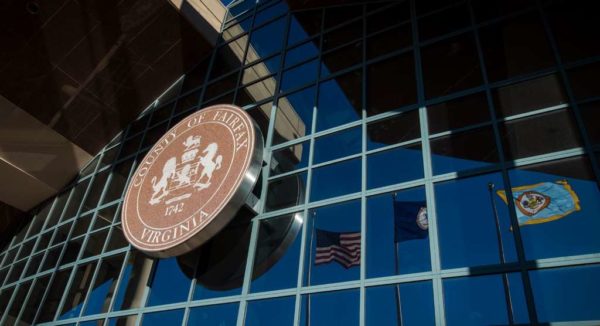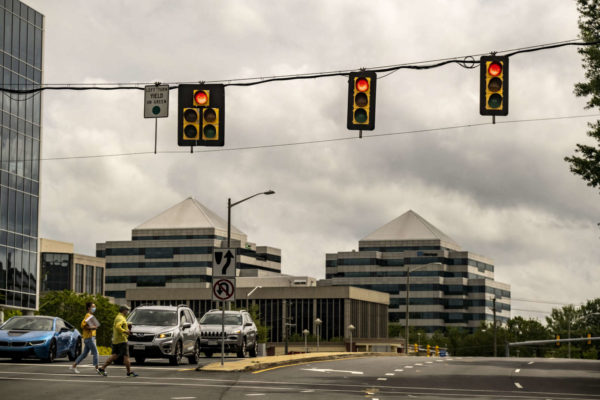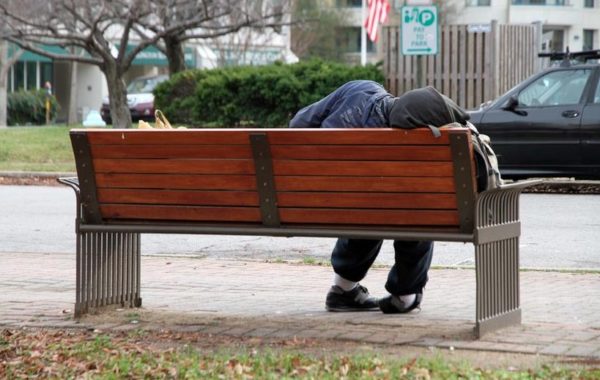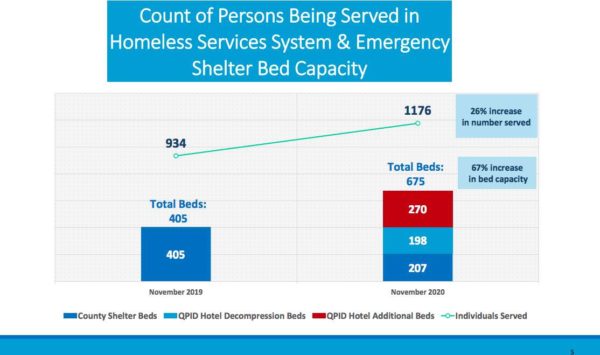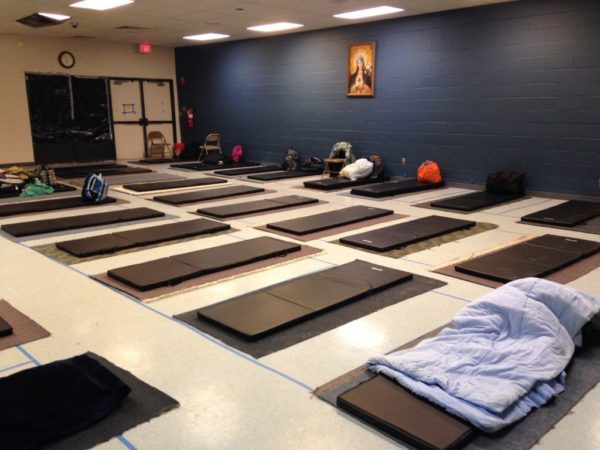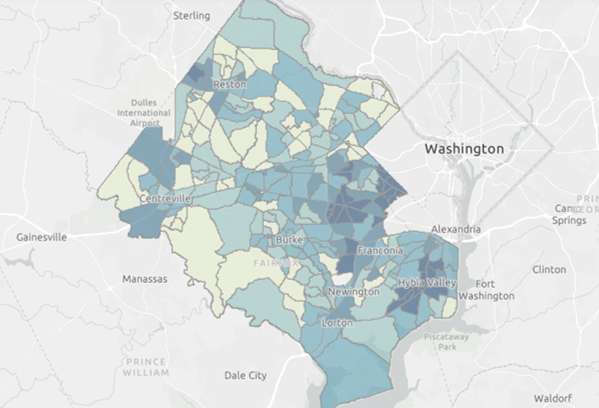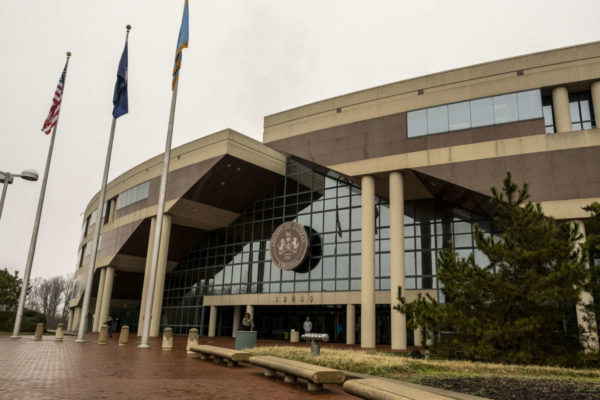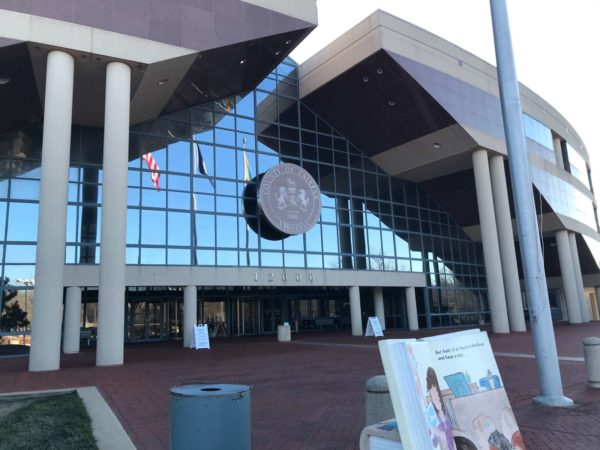Tysons recorded one of the biggest drops in rental prices in the U.S. last year during the early months of the COVID-19 pandemic, but the overall high cost of housing in Northern Virginia still presents a challenge to low-income residents.
The home insurance comparison site Insurify published a study on Tuesday (Jan. 12) of the 20 American cities that saw the highest decreases in rent prices between March 2020 — when the pandemic first shut much of the country down — and September 2020.
Tysons came in at #14 with an average decrease in rent of 10.7%, ranking above Santa Monica, Calif., and below Cambridge, Mass. The cost of renting an apartment in Tysons dropped 12.5% in 2020 compared to 2019.
However, the dip in rent prices does not mean Tysons has suddenly become significantly more affordable.
“With the exception of the top three in the rankings, the cities that experienced the largest dips in rent prices over the course of the pandemic have a higher-than-average cost of overall living,” the report says. “Despite the relative decreases in rent costs these regions saw throughout 2020, renting a 2-bedroom apartment in 17 out of 20 of these cities costs at least 35 percent more than the national average.”
As of this past September, the average cost of a two-bedroom apartment in Tysons was $2,043.
A separate report from the nonprofit Community Foundation for Northern Virginia (CFNV) found that low-income residents continue to be severely burdened by the cost of housing in the region, meaning that they spend more than half of their income on rent, mortgage, taxes, fees, and basic utilities.
Released on Wednesday (Jan. 13), the “Unequal Burden” report says that Northern Virginia has a higher rate of severe housing burden for households earning less than 200% of the federal poverty level — or approximately $50,000 for a family of four — than any other large metropolitan area in the U.S.
According to Insight Region, CFNV’s research center, most residents in the area earn enough income to afford the high cost of living, which requires a family with two parents and two school-age children to earn an estimated minimum annual income of $94,000. However, 67% of low-income households spend more than half of their gross income on housing.
The McLean-Idylwood area of Fairfax County has one of the highest severe housing burden rates, with 75% of low-income households putting the majority of their income toward housing costs. 73% of low-income households in the Vienna-Oakton-Fair Oaks community are considered severely burdened.
Insight Region Senior Director Emily Hughes told the Washington Business Journal that housing issues will likely get worse going forward, since many of the jobs held by low and moderate-income households have been hit particularly hard by the pandemic.
Fairfax County will receive an additional $34 million to provide emergency rental assistance to residents experiencing economic challenges due to the COVID-19 pandemic.
During a budget policy committee meeting yesterday (Tuesday), Fairfax County Department of Management and Budget Director Christina Jackson told the county board of supervisors that the department has submitted a certification for the award, and the amount is expected to be confirmed today.
The money comes from a $25 billion emergency rental assistance program that the U.S. Treasury Department established using funds from the COVID-19 relief package that Congress passed at the end of December.
“This will be huge,” Fairfax County Board of Supervisors Chairman Jeff McKay said. “I know we feel good about it, but obviously, there are a lot of folks out there struggling, and this will be a great opportunity to help those folks.”
Under the treasury program, renters may be eligible to receive assistance if at least one or more people in their household has experienced financial hardship due to the pandemic, are at risk of experiencing homelessness or housing instability, or have a household income at or below 80% of the area median income.
Applicants can receive up to 12 months of assistance, with the possibility of an additional three months if needed to ensure housing stability and funds are still available.
The treasury is allocating the funds directly to states and local governments with more than 200,000 residents.
Jackson says the treasury is required to disperse all of the program funds by the end of January, so the county should have “dollars in hand” by the end of the month.
“We’re working with staff to try to incorporate this funding with other awards that we’ve received to make sure we’re using all the resources to our advantage,” Jackson said.
Because of the incoming grant, the Fairfax County Department of Management and Budget is recommending that the county increase its COVID-19 grants reserve by $50 million as part of its Fiscal Year 2021 mid-year budget review.
To offset anticipated revenue losses, the county plans to take $9.1 million out of a general fund reserve that the board of supervisors set up in May to support its coronavirus response efforts.
If the adjustment is approved, the COVID-19 reserve will have $16 million remaining, including roughly $12 million that the county mostly plans to use for Federal Emergency Management Agency reimbursements.
As part of the mid-year review, Fairfax County staff are also recommending that the county create 13 new positions in the health department to boost its pandemic response, especially when it comes to the COVID-19 vaccination program. The positions would be initially covered by federal stimulus funds.
“We’re in constant contact with the health department relative to the continuous pivoting in response to COVID,” Fairfax County Chief Financial Officer Joe Mondoro said. “There are a number of other activities that they’re undertaking to respond to…whether that’s the need for additional contact tracers, whether that’s the escalation of the vaccination requirements.”
The board of supervisors will hold a public hearing and take action on the FY 2021 budget mid-year review when it meets on Jan. 26.
Photo via Fairfax County government/Facebook
In many ways, the Town of Vienna epitomizes the classic vision of a suburb with a main street surrounded by a sprawl of single-family houses, but the town’s effort to overhaul its zoning code for the first time in half a century could change that.
The town’s future could instead look more like the cottage-style housing that a pair of developers proposed to the Vienna Town Council during its work session on Monday (Dec. 14).
The first proposal came from Sekas Homes, which is looking at turning the Vienna Courts condominiums at 127-133 Park Street NE into a residential complex with 13 townhouses and 10 two-story, cottage-style duplexes.
For the second proposal, the homebuilder JDA Custom Homes wants to potentially redevelop the buildings at 117 and 121 Courthouse Road SW as a cottage-style subdivision with 12 units, either duplexes or detached houses.
Vienna Mayor Linda Colbert says the need to explore different housing options became apparent during the contentious, ultimately unsuccessful effort to establish a Maple Avenue Commercial zone, which was intended to encourage redevelopment and mixed-use projects.
According to Vienna’s Comprehensive Plan, which was last updated in 2015, its housing stock is comprised of 82.2% single-family houses, 7.6% townhouses, and about 10% multi-family units, including apartments, duplexes, and condos.
“With the MAC, there was a lot of discussion about what other kind of housing does Vienna offer for people who want to stay here, who don’t want a single-family house, or younger people,” Colbert said. “I know that conversation has been around for a while.”
According to Vienna Deputy Director of Planning and Zoning Michael D’Orazio, cottage homes offer a middle ground between condos or apartments and traditional single-family houses. They are smaller than traditional single-family units and can take the form of either detached houses or duplexes.
Cottage houses are also generally built around a central common area with parking separate from the main residence. They often appeal to people who want to downsize or age in place, since they are typically set up so residents can mostly live on one floor.
The Railroad Cottages in Falls Church are among the most prominent examples of cottage housing in Fairfax County.
D’Orazio said that Vienna’s comprehensive plan currently does not permit cottage housing, but it does mention village housing as an option for transitional areas between residential neighborhoods and commercial districts. Read More
Fairfax County Park Authority Director Announces Retirement Plans — “The executive director of the Fairfax County Park Authority in Virginia announced his plans to retire in February 2021 on Friday. Kirk Kincannon has served with the FCPA since 2014, and did a 10-year stint with the agency earlier in his career.” [WTOP]
Westbound Route 7 Roadwork Prompts Lane Shift — “Beginning on or about Monday, Dec. 7, drivers on westbound Route 7 will experience a lane shift to the north (away from the median) between Jarrett Valley Drive and Lewinsville Road as crews continue to build the improvements along Route 7 that will add a third lane and shared-use paths in each direction.” [Virginia Department of Transportation]
Tysons Annual Report Shows Mixed Results on Housing — “The 2020 report provides some important updates on housing construction in Tysons, and it also provides an opportunity to evaluate the effectiveness of the plan’s income-restricted housing requirements.” [Greater Greater Washington]
Staff Photo by Jay Westcott
Updated on 12/4/2020 — Five new luxury homes are about to hit the market in McLean.
Scheduled to go up for sale in mid-December, the houses belong to a new luxury neighborhood called Park Grove that is located along Inverness Park Lane near the intersection of Chain Bridge and Davidson Roads.
Park Grove occupies land that was previously owned by former U.S. National Park Service Director George Hartzog, who lived on the property for decades, according to Gulick Group, the Reston-based luxury home builder that constructed the new community.
The new neighborhood consists of eight custom houses and a centrally located private park space inspired by Hartzog’s efforts to expand the National Park System during the nine years when he served as director.
The park, which will be exclusively open to residents, will contain a sculpture designed by Washington, D.C., native artist Chris Tousimis.
“The history of the site inspired the theme for Park Grove,” Gulick Group Vice President of Sales and Marketing Jamie Gulick said. “The community is walkable, backs to a park, offers indoor-outdoor spaces, and we hope will encourage lifestyles connected to nature and broader McLean.”
Gulick Group held a soft opening for Park Grove this past spring, and three of the eight houses have already been purchased.
With price tags in the $2.2 million range, the houses feature open floor plans with tall windows that allow for natural light, up to five bedrooms with en-suite baths, high ceilings, and up to two offices. They can be custom-fitted with elevators and large sliding doors in the family rooms or upper-level terraces.
There are two different available floor plans.
The Parkline 60 model ranges from 5,640-6,400 square feet and costs approximately $2.26 million. It has a studio-style layout with a waterfall island that bridges the kitchen and living room as well as a sunlit breakfast room in the back.
The Parkline 80 model ranges from 5,600-7,270 square feet and costs around $2.33 million. It features a formal dining room and an optional three-car garage or second owner’s suite on the main level.
A furnished Parkline 80 model will be available to view by appointment in January 2021, Gulick Group says.
“We designed Park Grove to be distinctive and inviting,” Gulick said. “…Flatter rooflines with broad, downlit soffits create an urban streetscape, and the colors on the stone and siding evoke nature. Park Grove is exceptional in McLean.”
About 250 more people are using Fairfax County’s emergency homelessness services this November over last November, and there are enough beds for just over half of them.
That number could increase as the federal ban on evictions draws nearer.
“As we look at potential rising eviction numbers, we need to be aware of the capacity for the homelessness system,” Fairfax County Health, Housing and Human Services Chief Strategist Dean Klein told the Board of Supervisors during a Health and Human Services committee meeting on Tuesday (Nov. 24).
With COVID-19 cases rising, Fairfax County is dealing with increasing numbers of people experiencing homelessness as well as the threat of rising eviction rates. Klein says rent assistance and partnerships with landlords will be critical for preventing evictions and keeping people in homes this winter.
“Our ongoing efforts to reach out to vulnerable populations is increasingly critical,” he said.
One step Fairfax County has taken is to form an eviction prevention task force with representatives from various county agencies, the county sheriff’s office, and the nonprofit law firm Legal Services of Northern Virginia.
Klein says he hopes to receive financial support from the Board of Supervisors next month. His staff anticipates spending at the same level as it is right now, which is about $600,000 a week.
Providence District Supervisor Dalia Palchik said a board matter is in the works that would “give additional local support for our continuation of basic needs, which we know continues to be a concern for us.”
Although funding comes from a number of sources, some are set to run dry soon, adding to the sense of urgency.
The Federal Emergency Management Agency stepped in this year to pay for hotel rooms so that people experiencing homelessness could have a place to sleep safely during the pandemic. However, it is unclear how long FEMA will continue to provide funding, Klein says.
Fairfax County Office to Prevent and End Homelessness Deputy Director Tom Barnett said the FEMA commitments are on a month-to-month basis and will last through the middle of December.
“We will continue to request extensions every month as they will support most of these expenses,” he said. Read More
Though the U.S. Centers for Disease Control and Prevention issued an eviction moratorium on Sept. 4, the ability to keep up with rent payments has been one of the most urgent challenges of the COVID-19 pandemic for Fairfax County residents, along with food insecurity.
As of Nov. 16, Fairfax County Coordinated Services Planning, which connects individuals to social services, has received 4,693 requests for rental assistance so far this year, according to Fairfax County Health and Human Services.
The county generally gets around 5,000 housing payment assistance requests every fiscal year.
“The pandemic has exacerbated the situation of our most vulnerable residents,” HHS public information officer Shweta Adyanthaya told Tysons Reporter in an email. “The system has seen a significant increase [of] over 3,000 new households, requesting all basic needs – housing, utility, food assistance – during the pandemic response.”
Relaying information from HHS Chief Strategist Dean Klein and Neighborhood and Community Services Deputy Director Sarah Allen, Adayanthaya says that, while requests have come in from all parts of the county, the areas with the highest levels of need now are the same areas that struggled most prior to COVID-19.
Calculated based on various social and economic factors, including housing, food access, employment, and health insurance, a COVID-19 Vulnerability Index developed by Fairfax County indicates that Falls Church, Annandale, Alexandria, and Herndon are among the areas most in need of assistance.
To help provide resources to tenants at risk of losing their homes, Fairfax County formed an eviction prevention task force with representatives from various county agencies, the county sheriff’s office, and the nonprofit law firm Legal Services of Northern Virginia.
The task force has also been charged with collecting and analyzing data on the eviction situation in Fairfax County, which will then be used to help direct resources and guide recommendations for future actions.
According to HHS, it is currently unknown how many Fairfax County residents have been evicted or become homeless since COVID-19 arrived in Virginia this past spring.
However, Adayanthaya says the county is “taking a proactive approach” to contact residents who get pulled into the legal system for evictions, and it has expanded outreach efforts to connect vulnerable and hard-to-reach populations with essential resources.
The county has also started outreach efforts to landlords that will expand in the new year.
“Communication is a key ingredient in communicating with tenants who are at risk of eviction as well as landlords,” Adayanthaya said. “We have been working hard to provide as much current information to prevent unwarranted eviction and to help educate the community.”
Currently set to expire on Dec. 31, the CDC’s temporary moratorium bars landlords from issuing evictions from residential properties for nonpayment of rent by individuals with incomes lower than $99,000 and married couples with joint incomes of less than $198,000.
Tenants in those categories will be covered by the moratorium if they are unable to pay rent due to income loss or extraordinary out-of-pocket medical expenses and would become homeless if evicted. They must present a declaration to their landlord.
The Fairfax County Redevelopment and Housing Authority has suspended evictions for rent nonpayment and associated charges or fees for residents of its properties. Late rent penalties also have been waived until further notice for renters at county-owned and managed properties.
Adayanthaya says the impact of eviction moratoriums on landlords, particularly small and family owners, has raised concerns in Fairfax County about the potential loss of affordable housing, but such measures are critical right now from a public health standpoint as well as a socioeconomic one.
“Eviction moratoria – like quarantine, isolation and social distancing – are effective public health measures to prevent the spread of COVID-19,” Adayanthaya said. “Housing stability helps protect public health as homelessness increases the likelihood of individuals moving into congregate settings, such as homeless shelters, which puts individuals at higher risk for COVID-19.”
According to HHS, the Fairfax County Office to Prevent and End Homelessness has secured 445 rooms at six hotels as of Nov. 12 to provide shelter for people experiencing homelessness and individuals who are unable to isolate or quarantine safely in their homes.
358 of those rooms are currently occupied by 462 guests for an 80% occupancy rate. 90% of the individuals residing in the hotels were referred by homeless services providers. Only two of the guests were not homeless upon admission.
“Since the hotels opened, 132 people who were experiencing homelessness at admission moved to permanent housing situations,” HHS says.
Additional housing assistance information and a guide to tenant-landlord rights can be found on the Fairfax County emergency information website.
Photo via Fairfax County Office to Prevent and End Homelessness/Facebook, map via Fairfax County
A temporary statewide moratorium on eviction proceedings will remain in effect from this week through Sept. 7, according to a Virginia Supreme Court Order.
The move comes amid an ongoing Congressional stalemate over the next economic relief package.
In a statement on Monday (Aug. 10) Gov. Ralph Northam said the decision is necessary to ensure all Virginians maintain “safe, stable housing” as the fight against the COVID-19 pandemic continues. He hopes to work with the Commonwealth’s General Assembly this month to craft more permanent legislative protections for homeowners and tenants.
So far, the state has pumped $50 million via the federal Coronavirus Aid, Relief and Economic Security Act (CARES) specifically for households facing eviction or foreclosure due to the pandemic. A number of county-based resources to navigate the issue are also available online.
The end of the federal moratorium on evictions, which expired last month, and the lapse of the $600 weekly boost to unemployment benefits, has left many renters in peril.
Roughly 27 percent of adults in the country missed their rent or mortgage payment in July, according to a nationwide survey by the U.S. Census Bureau. Roughly 34 percent of renters said they were unsure how they would make their August payments.
Given this economic backdrop, do you think Northam should further extend the temporary ban on eviction proceedings? Let us know in the comments below. Also, we’d love to hear from readers on their experiences with paying rent and mortgages and their interactions with landlords.
Photo by Tierra Mallorca/Unsplash
A trio of Fairfax County Board Supervisors has pushed for the establishment of the Affordable Housing Preservation Task Force.
The task force was created through a board matter during a Fairfax County Board of Supervisors’ meeting on July 28. Chairman Jeff McKay and supervisors John Foust, Dalia Palchik, who represent the Dranesville and Providence districts, noted that the task force is essential in order to preserve affordable housing, especially as older multifamily rental and mobile home communities are threatened by demolition or redevelopment.
“These trends are slowly eroding the county’s market affordable housing stock and forcing families and individuals out of the communities where they work,” the board matter states.
The move comes as the county continues discussions on ways to improve its affordable housing and workforce dwelling unit policies. In 2016, the board calls for the development of a housing strategic plan that offers guidance on how to strengthen and preserve affordable housing.
According to an analysis by the Virginia Center for Housing Research at Virginia Tech, there are 9,500 housing units in Fairfax County that are considered market affordable and target households earning 60 percent of the area median income and below.
The county is aiming to ensure that no market affordable housing units in the county are lost — a recommendation provided by the board-created Affordable Housing Resources Panel.
The board matter calls on the task force to develop a comprehensive preservation plan. The task force will provide recommendations to the Board of Supervisors on the following issues by the end of the first quarter of 2021:
- “Definitions for the types of preservation that can occur in communities;
- typology of properties at risk and characteristics to guide prioritizing properties or
- neighborhoods in need of action sooner; and
- a comprehensive set of preservation strategies that includes recommended policies and
- tools to achieve the county goal of no net loss of affordability.”
“The way to ensure no net loss is through clear articulation of preservation strategies,” the board matter states.
The task force will include a variety of stakeholders, including the private sector, county officers and local planners.
Dranesville District Supervisor John Foust is joining an effort by Fairfax County officials to help people avoid evictions during the coronavirus pandemic.
Foust teamed up with Chairman Jeff McKay and Mount Vernon District Supervisor Dan Storck on a board matter to address rent relief options. The Fairfax County Board of Supervisors approved the proposal yesterday (Tuesday).
“As we continue to address the impact of COVID-19 and the associated impact on employment in our community, low and moderate income families in particular are increasingly at risk of falling behind on rent and mortgages, and eventually eviction and even homelessness,” the board matter says.
County staff must now develop a Housing Partnership Pledge by working with landlords and lenders. The county officials want to see them offer to defer foreclosures and evictions, along with providing extra time for tenants to pay rent.
Fairfax County is looking at Chicago’s pledge as a guide, according to the board matter.
Along with the pledge, the county is directing the Department of Housing and Community Development to develop new guidelines for emergency rental assistance so that landlords must work “in good faith” to keep their tenants housed in exchange for the county helping tenants’ make payments.
Under the new guidelines, landlords receiving the assistance would have to notify the county before taking legal action against the tenants.
“In addition, we should explore asking landlords receiving emergency rental assistance to waive late fees dating to April 1,” the board matter says.
Additionally, the Redevelopment and Housing Authority is now asked to look into more opportunities to provide emergency rental assistance.



